The Monthly Salon: April
The Batman Theory of Decline, and more
Welcome to the monthly salon here at the Abbey, which is a space for readers to talk about anything you’ve been burning to say, or just feel like coming out with, about life in the age of the Machine.
My prompt this month is an excuse for me to lay out out a grand pop culture notion I’ve been idly toying with. I call it the Batman Theory of American Decline.
Batman is the ultimate hero for the post-modern West. He’s an urban loner, he’s fighting for a better world, he’s driven by unresolved personal trauma, and his ideology and his identity are both fluid. On top of that, he’s a thwarted idealist, he has a love-hate relationship with authority, and he can never quite make up his mind whether Gotham is best cleaned up by thoroughgoing top-down reform or just by masking up and kicking the shit out of the baddies. Also, he has a technological fix for everything. When I was a child, I was desperate for my own utility belt, especially if it contained anti-shark spray.
My grand theory is that the representation of Batman at any given time in history mirrors the self-image of the America he walks through, and consequently the self-image of the West which lives in America’s shadow.
Here is Batman in 1966. Image: Swinging sixties campness in shiny pants and a sucked-in gut. Nothing really bothers him. He runs the world, so he can afford to muck about:
Here is Batman in 2022. Image: Policing post-invasion Iraq (or Seattle last Tuesday) in full body armour whilst musing on his white privilege in a world which has soured on him but still buys his action figures - though mainly online, due to covid restrictions and supply-chain disruption:
Actually, this would hold up just as well as the Joker Theory.
1966: Meet your slightly creepy, over-enthusiastic uncle.
2021: Call the exorcist! I repent!
Lest any of my American readers feel offended, I should say that those of us who come from gasping post-imperial nations are just as flooded with psychic Batman residue as you are. I grew up with 1960s Batman. I even had an excellent little metal Batmobile which fired real plastic bullets. When archaeologists of the future disinter the remains of our end-of-days culture, it’ll be Batman all the way down.
Of course, there’s no need to even mention any of this here. Feel free to ignore it entirely and talk about something more interesting. Over to you.



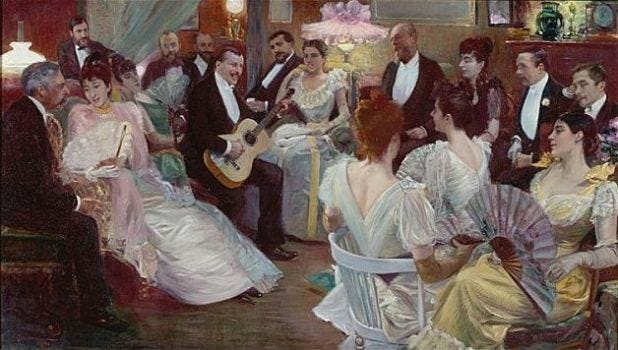
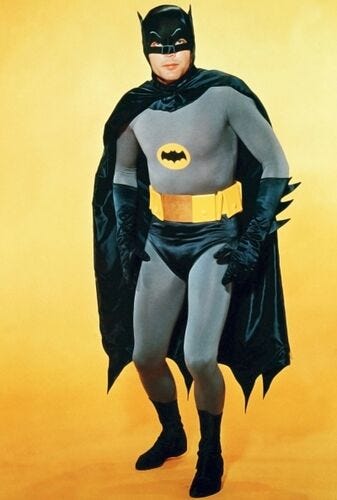
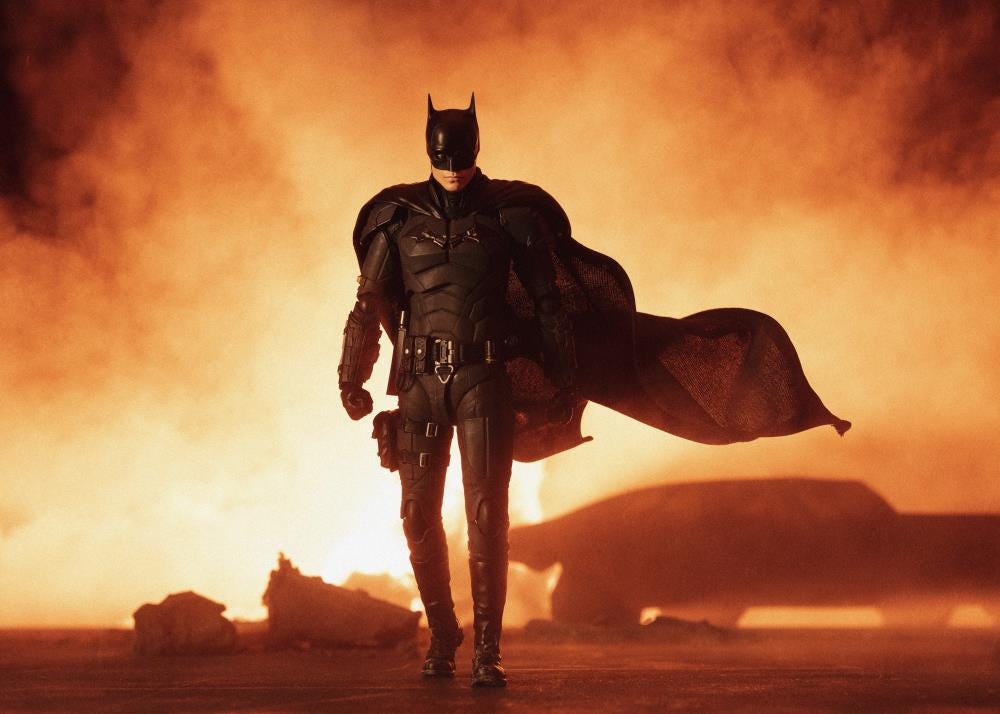
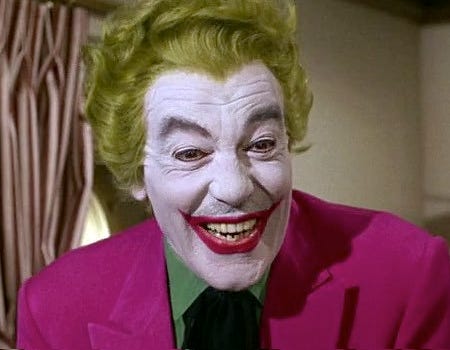
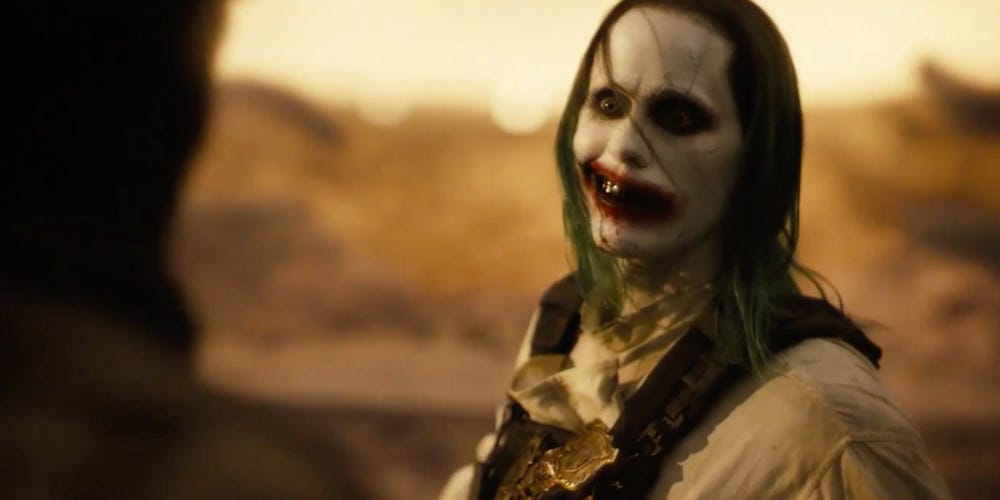
Thank You for all You've written. I look forward to Your "Divining the Machine" series, as I feel fairly sure I'll agree with most all.
In either event, I wonder if it has been precipitated by the supposed dominance of the left hemisphere of the brain over the right hemisphere. Are You familiar with Dr. Iain McGilchrist, M. Kingsnorth and/or anyone reading? He did 20 years of research and understood that, sure, both hemispheres do, indeed, perform virtually all the same functions as the other hemisphere. That's the conventional wisdom, which I gather still holds sway in a lotta places. Where Dr. McGilchrist varied in his analysis was that the two hemispheres weren't *physically* the same, and also that they didn't process information in a similar manner. Quite DISsimilar, according to his lights.
One hemisphere (left) pretty good at analyzing numbers and logic and *especially* reducing a whole into it's subordinate parts. The other (right) able to see the parts and the whole while simultaneously seeing, in the moment, their interdependencies and "lifeness" all of which the left-hemisphere is totally incapable of.
If anyone is interested his most accessible book is "The Divided Brain and the Search for Meaning." $.99 and about an hour. Kindle only. He became somewhat famous for his 500-page book. And recently completed his 2000-page magnum opus. I need to reread those two in order to come close to fully understanding them. https://smile.amazon.com/Divided-Brain-Search-Meaning-ebook/dp/B008JE7I2M/ref=sr_1_6
Just thought I'd pass that along and HTH. And TYTY again, Sir Paul. :) On to reading what You "said" about The Machine.
Interesting stuff. There are a few other factors at play as regards the shifting versions of Batman over the decades. The 60s TV show took its cue from the Batman comics of the preceding decade or so, a time when the industry had to respond to a growing moral panic over perceived links to the content of comic books and juvenile delinquency and general bad behaviour. Rather than be policed by the government, comic companies created the Comics Code Authority which had strict guidelines about what a comic could and could not contain. Out went crime, horror, gangsters, graphic violence and allusions to sexuality and in came zany, cartoonish, adventures often involving ridiculous gadgets and excursions into outer space. The code endured until content creators started to chafe against it in the mid 1970s ( a period when the Batman comic started to head back to its noir roots) and ignore it completely by the mid 1980s. Had the code not been in place, and any menace contained inside a comic book's pages effectively jettisoned completely, we may have seen a darker incarnation in the original TV show which took its cue from the comics of the period. The arrival of Batman graphic novels (very much marketed at older teens and adults) in the 1980/90s by writers like Alan Moore, Frank Miller and Grant Morrison continued the trend, which started in the 70s, for much darker, violent and grittier stories which carried on through the 90s and 00s and which is very much the tone of Batman today. In that context the 60s Batman is an anomaly (the two Batman films made after Tim Burton's gothic versions were more cartoony but they were both critical and commercial disasters) and the default Batman is the dark, tortured, shadowy anti-hero. A grim, gritty Batman sells it would seem. Which as you rightly say probably says something about us and the times in which we live. As a side note I think it's fair to say that Gotham is often viewed as a proxy for New York city which endured a tumultuous time during the decade of the 1970s with spiralling crime rates, civil unrest, poor sanitation, blackouts and drug problems. About a million people left the city during that time and properties in the centre of town, that today are probably worth a fortune, lay empty or was occupied by punk musicians and artists taking advantage of the low rents. This idea of the city (New York especially) as some kind of modern hell very much fed into the Batman comics of that period and have remained a major feature of the printed and screen versions of the character ever since, as well as in the films of other people who grew up during that same time (Michael Mann, John Carpenter, Ridley Scott, David Fincher). William Blake got there first over two hundred years ago when he saw the same 'hell' in the dirt and poverty of industrial London. Over the last few years the storylines in the Batman comic books have featured squabbles over investment in the city's infrastructure, arguments about gentrification and rising living costs that are pushing ordinary people to the margins. Batman himself has lost his fortune, his vast house and his company and lives in a modest apartment. His butler Alfred is dead and the Batcave has been scaled down and relocated to deep within the sewerage system beneath the city. It's all a far cry from the day glo figure who carried a can of shark repellent spray and was given to dancing the 'Batusi'!